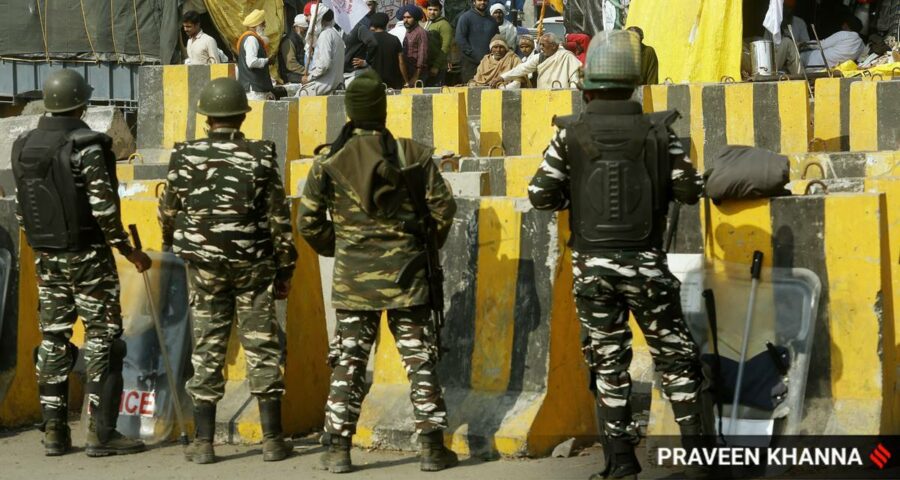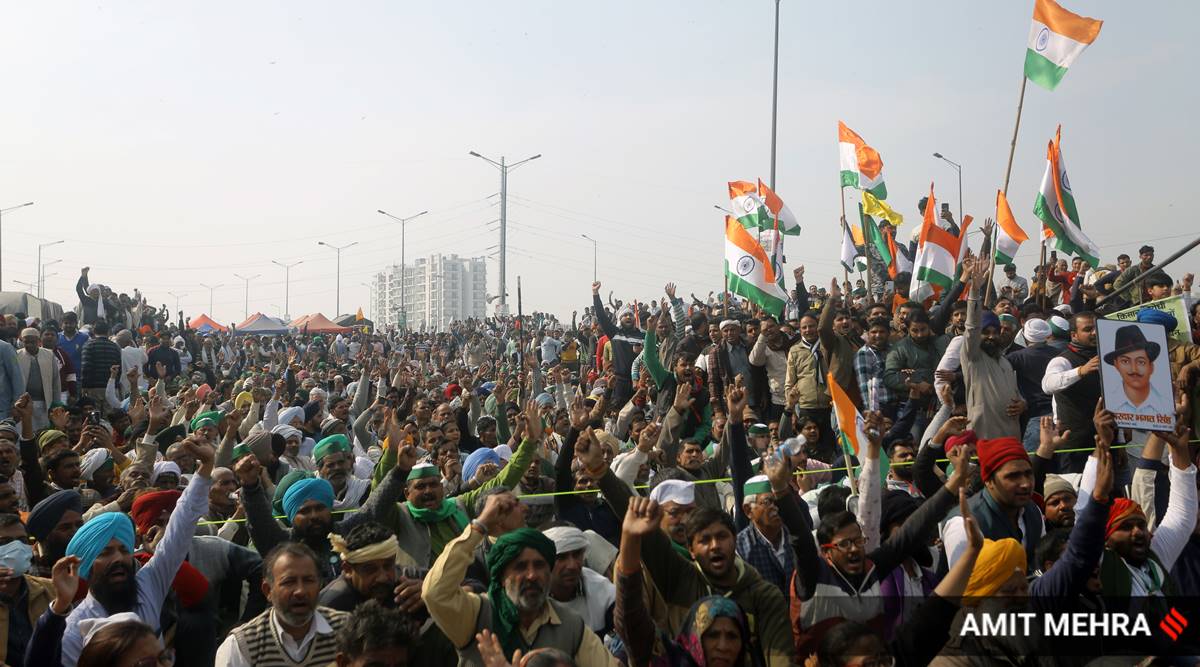The ban, ostensibly to "maintain public safety and avert emergency," will be until 11 pm on January 31. On January 26, internet services here had been suspended from 12 noon to midnight.
SHORTLY after a video of a weeping Rakesh Tikait went viral on social media galvanising more farmers from Haryana and western UP to join the protests, the Ministry of Home Affairs Saturday extended the suspension of the internet in the capital’s border areas to include all protest sites: Singhu, Ghazipur, Tikri and their adjoining localities.
The ban, ostensibly to “maintain public safety and avert emergency,” will be until 11 pm on January 31. On January 26, internet services here had been suspended from 12 noon to midnight.
Telecom service providers are bound by their licence agreements to comply with such government orders.
The January 26 ban had been extended until January 27. Following this, the internet speed had been significantly reduced in these areas. But after the Ghazipur tension and the fact that farmers’ ranks have only swelled after Tikait’s outburst, the net has been suspended again, sources said.
This has been coupled with heavy deployment of security forces at Singhu and Ghazipur borders which have also seen clashes between “locals” and protesters in the last couple of days.
Internet, voice, as well as other broadband telecom services, can be suspended citing public safety and security, either by the Department of Telecommunications (DoT) or by the order of an officer of the rank of Joint Secretary or above, authorised by the Centre or the state home secretary in case of “unavoidable circumstances”.
Apart from Delhi, internet has also been suspended in at least 17 districts of Haryana, including the Delhi-bordering districts of Jhajjar, Palwal and Sonipat, all within a 2-hour driving distance from Central Delhi.
Internet services in the NCR were last suspended in December 2019, during the anti-CAA protests. Acting on a Delhi Police order, telecom operators had snapped all services, including voice and SMS, for four hours, between 9 am and 1 pm, on December 19, 2019.
Snapping the internet will hit the protests. For, all coordination between villages and the protest site, mobilisation of events and personnel are done via videos on social media or sent via WhatsApp.
The Tikait video set off mobilisation across Haryana prompting several khap panchayats to give a call for farmers to move to Delhi in large numbers. In Punjab, too, several panchayats passed resolutions asking people to send one person from every village. In all these cases, WhatsApp messages, audios and videos have played a key role.
Indeed, since the sit-in started in November, protesters at the three sites have also used social media to fight what they call “misinformation” and “biased” coverage in sections of the media. Young men and women recording Facebook lives is a common sight at the protest sites, and several Twitter handles from among the protesters have become popular online sources on the protests with addresses by farm leaders being streamed in real time.
“Many media houses run state-sponsored propaganda. There are senior journalists with a large numbers of followers putting up misinformation through their online handles. In that situation, social media is our only way to communicate with a large number of people to counter this,” said Garamneet Mangat, a committee member of the Ghazipur Kisan Andolan Committee.
There’s a personal purpose, too. Many have been at the protest sites for almost two months now and they say video calls with families back home are the only way to stay connected. That has been interrupted, they said.
Source: Read Full Article



